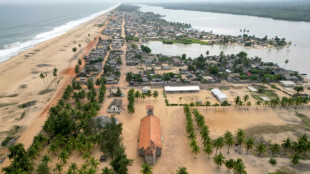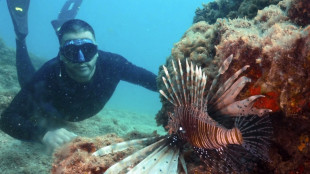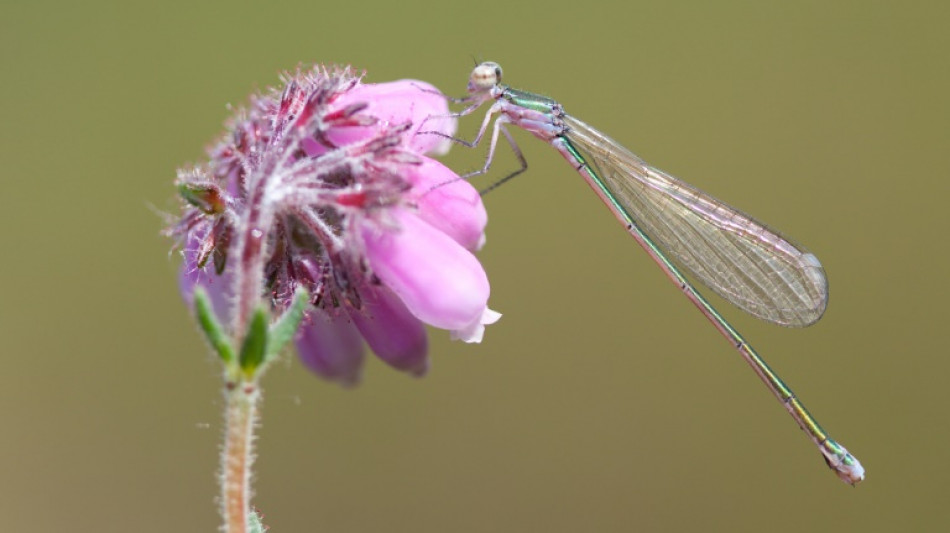
-
 Trump hails Putin summit but no specifics on Ukraine
Trump hails Putin summit but no specifics on Ukraine
-
El Salvador extends detention of suspected gang members

-
 Scotland's MacIntyre fires 64 to stay atop BMW Championship
Scotland's MacIntyre fires 64 to stay atop BMW Championship
-
Colombia's Munoz fires 59 to grab LIV Golf Indy lead

-
 Alcaraz survives Rublev to reach Cincy semis as Rybakina topples No. 1 Sabalenka
Alcaraz survives Rublev to reach Cincy semis as Rybakina topples No. 1 Sabalenka
-
Trump offers warm welcome to Putin at high-stakes summit

-
 Semenyo racist abuse at Liverpool shocks Bournemouth captain Smith
Semenyo racist abuse at Liverpool shocks Bournemouth captain Smith
-
After repeated explosions, new test for Musk's megarocket
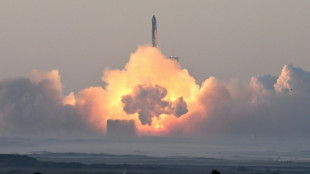
-
 Liverpool strike late to beat Bournemouth as Jota remembered in Premier League opener
Liverpool strike late to beat Bournemouth as Jota remembered in Premier League opener
-
Messi expected to return for Miami against Galaxy

-
 Made-for-TV pageantry as Trump brings Putin in from cold
Made-for-TV pageantry as Trump brings Putin in from cold
-
Coman bids farewell to Bayern before move to Saudi side Al Nassr

-
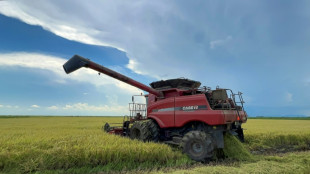 Vietnamese rice grower helps tackle Cuba's food shortage
Vietnamese rice grower helps tackle Cuba's food shortage
-
Trump, Putin shake hands at start of Alaska summit

-
 Coman bids farewell to Bayern ahead of Saudi transfer
Coman bids farewell to Bayern ahead of Saudi transfer
-
Liverpool honour Jota in emotional Premier League curtain-raiser

-
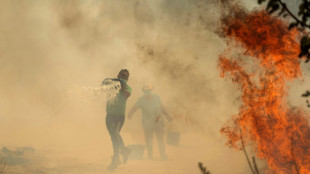 Portugal wildfires claim first victim, as Spain on wildfire alert
Portugal wildfires claim first victim, as Spain on wildfire alert
-
Davos founder Schwab cleared of misconduct by WEF probe

-
 Rybakina rips No.1 Sabalenka to book Cincinnati semi with Swiatek
Rybakina rips No.1 Sabalenka to book Cincinnati semi with Swiatek
-
Trump lands in Alaska for summit with Putin

-
 Falsehoods swirl around Trump-Putin summit
Falsehoods swirl around Trump-Putin summit
-
US retail sales rise amid limited consumer tariff hit so far
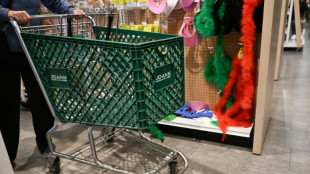
-
 Liverpool sign Parma teenager Leoni
Liverpool sign Parma teenager Leoni
-
Canadian football teams will hit the road for 2026 World Cup

-
 Bethell to become England's youngest cricket captain against Ireland
Bethell to become England's youngest cricket captain against Ireland
-
Marc Marquez seeks elusive first win in Austria

-
 Trump, Putin head for high-stakes Alaska summit
Trump, Putin head for high-stakes Alaska summit
-
Brazil court to rule from Sept 2 in Bolsonaro coup trial

-
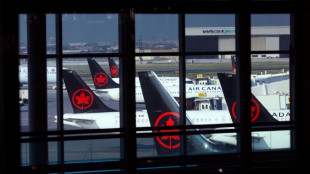 Deadline looms to avert Air Canada strike
Deadline looms to avert Air Canada strike
-
Spain on heat alert and 'very high to extreme' fire risk
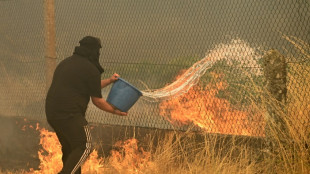
-
 Taliban mark fourth year in power in Afghanistan
Taliban mark fourth year in power in Afghanistan
-
Man City boss Guardiola wants to keep Tottenham target Savinho

-
 No Grand Slam Track in 2026 till athletes paid for 2025: Johnson
No Grand Slam Track in 2026 till athletes paid for 2025: Johnson
-
Macron decries antisemitic 'hatred' after memorial tree cut down
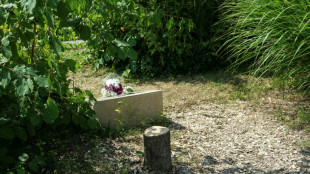
-
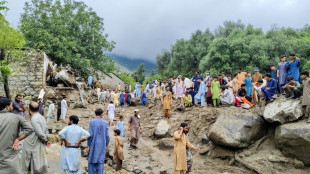 'Doomsday' monsoon rains lash Pakistan, killing almost 200 people
'Doomsday' monsoon rains lash Pakistan, killing almost 200 people
-
Arteta hits back at criticism of Arsenal captain Odegaard

-
 Leeds sign former Everton striker Calvert-Lewin
Leeds sign former Everton striker Calvert-Lewin
-
'Obsessed' Sesko will star for Man Utd says Amorim

-
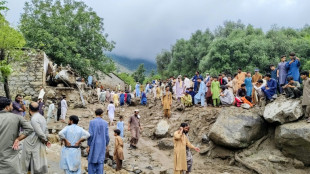 Deadly monsoon rains lash Pakistan, killing nearly 170
Deadly monsoon rains lash Pakistan, killing nearly 170
-
Lyles hints at hitting Olympic form before Thompson re-match

-
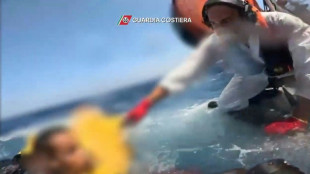 Italian authorities try to identify Lampedusa capsize victims
Italian authorities try to identify Lampedusa capsize victims
-
UK king, Starmer lead VJ Day tributes to WWII veterans, survivors

-
 South Korean president vows to build 'military trust' with North
South Korean president vows to build 'military trust' with North
-
Macron vows to punish antisemitic 'hatred' after memorial tree cut down

-
 Hodgkinson happy to be back on track ahead of Tokyo worlds
Hodgkinson happy to be back on track ahead of Tokyo worlds
-
Deadly monsoon rains lash Pakistan, killing dozens

-
 Frank urges 'real' Spurs fans to back Tel after racist abuse
Frank urges 'real' Spurs fans to back Tel after racist abuse
-
Japan's emperor expresses 'deep remorse' 80 years after WWII

-
 Chelsea boss Maresca eager to sign new defender as Colwill cover
Chelsea boss Maresca eager to sign new defender as Colwill cover
-
Liverpool target Isak controls his Newcastle future: Howe


After miraculous comeback, damselfly in distress again
When the damselfly reappeared in France in 2009 after a 133-year absence, it was considered a small miracle.
But the dragonfly's smaller cousin hasn't been seen in four years, sparking fresh fears it may be gone for good -- a worrying indicator of the health of the world's precious wetlands in which it breeds.
Damselflies face menaces on multiple fronts. In Asia, the wetlands and jungles in which they live are often cleared for crops like palm oil. In Latin America their habitats are razed to build houses and offices.
In Europe and North America, pesticides, pollutants and climate change have posed the biggest threat.
So when the Nehalennia speciosa damselfly was spotted in wetlands in the Jura region of eastern France for the first time since 1876, scientists were overjoyed -- calling the rediscovery an "ecological scoop".
But that comeback was probably only a "remission from the collapse that our biodiversity is suffering," said naturalist Francois Dehondt.
The last confirmed sighting was in 2019, when a severe drought gripped the Jura, and experts fear there might not be a second comeback.
"The water source that shelters the insect was reduced to nothing" by drought, Dehondt wrote in France's Le Monde newspaper in December.
In 2020, water levels remained low. The following year, some water returned to the bogs of the Jura where a dozen or so damselflies had been spotted in 2009.
And then last year -- the hottest on record in France -- the region was once again parched.
Damselflies were nowhere to be seen.
- 'Warning lights' -
With a slender green-blue body that resembles bamboo and delicate translucent wings, the Nehalennia speciosa might look like a dragonfly to the untrained eye.
But at about 25 millimetres (less than an inch) long, Europe's smallest damselflies don't fly as well and often need to be shaken from bushes to be seen, making them very hard to detect.
The International Union for Conservation of Nature (IUCN) said 16 percent of all 6,016 dragonfly and damselfly species globally risk extinction. In France, the damselfly is classified as "critically endangered".
France's Office for Insects and their Environment (OPIE), which is in charge of monitoring damselflies, suspects the subspecies has disappeared again.
"Given the state of environmental degradation and drought that we have seen for years, (the likelihood of seeing a damselfly in the Jura) is really very compromised," OPIE's Xavier Houard told AFP.
"The warning lights are red. But it's too soon to be completely certain," he added.
The agency will only confirm a "proven disappearance" of a species after 25 years of "non-observation" during which thorough searches are carried out.
And Houard has not lost hope just yet.
"The species has already demonstrated its ability to pass under the radar of observers" for over a century, he said.
- World Wetlands Day -
The demise of France's damselflies further underpins how vulnerable the country's wetlands are -- a reality across Europe and indeed the world.
"Globally, these ecosystems are disappearing three times faster than forests," IUCN director general Bruno Oberle said in 2021 when the organisation updated its Red List of Threatened Species.
Since 1900 an estimated 64 percent of the world's wetlands -- which include lakes, rivers, marshes, lagoons and peat bogs -- have disappeared, according to the Ramsar Convention on Wetlands treaty.
Wetlands are crucial for the planet's health. They store 25 percent of the world's carbon and provide clean water and food. Up to 40 percent of the world's species live and breed in wetlands, according to the United Nations.
Yet a quarter are in danger of extinction.
The UN -- which marks World Wetlands Day on Thursday -- said there is an "urgent need" to restore 50 percent of destroyed wetlands by 2030.
In the meantime, France's scientists continue to scour for the elusive damselfly, whose very presence is "a wonderful indicator... of the health of wetlands", according to Houard.
Their disappearance would be nothing short of an "alarm bell", he added.
C.Kovalenko--BTB

